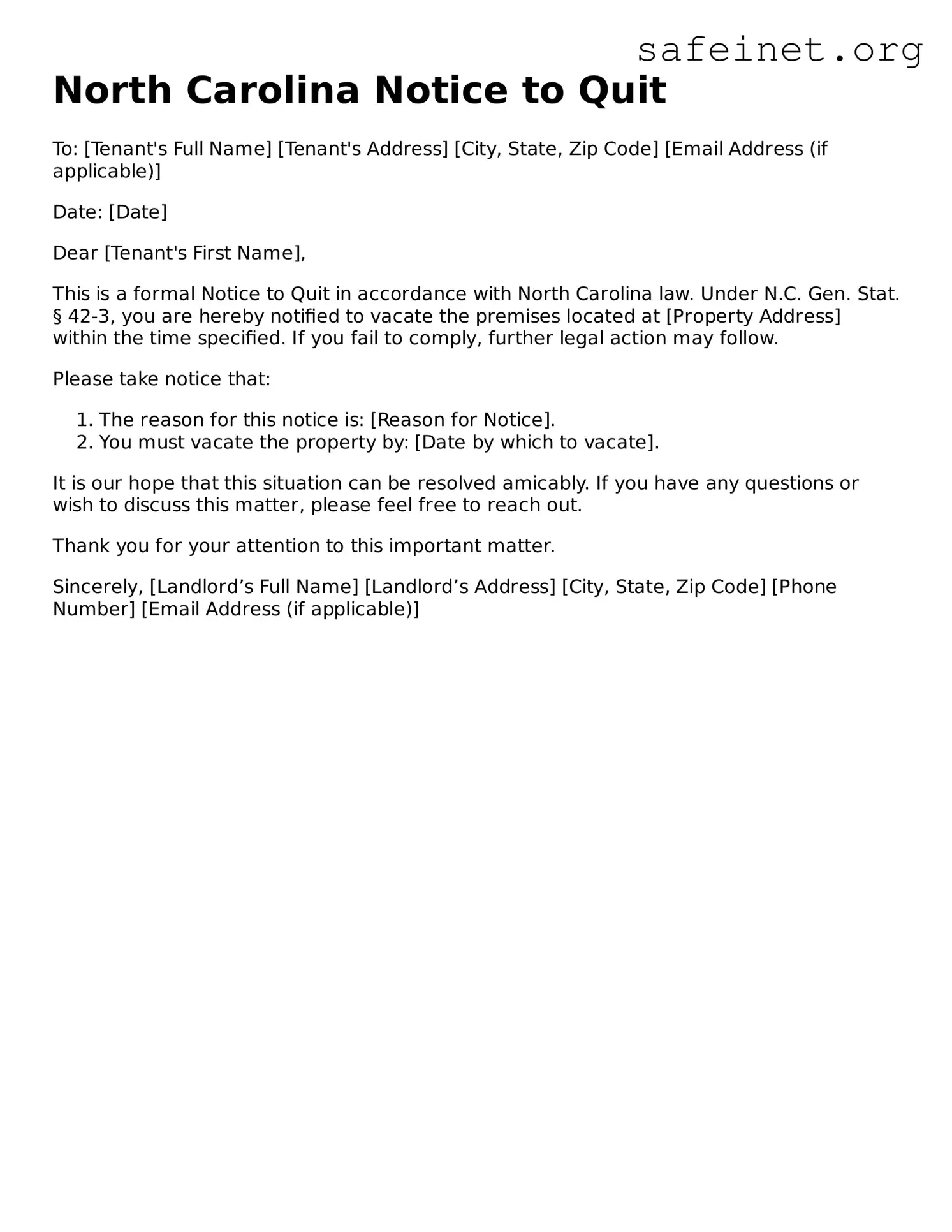What is a Notice to Quit in North Carolina?
A Notice to Quit is a legal document that a landlord can issue to a tenant to terminate a rental agreement or lease. In North Carolina, this notice informs the tenant that they must vacate the property by a specified date. The Notice to Quit can be issued for various reasons, including failure to pay rent, lease violations, or if the landlord wishes to terminate a month-to-month tenancy. It is an essential step in the eviction process and must be done according to state guidelines.
How long does a tenant have to respond to a Notice to Quit?
The timeframe for a tenant to respond to a Notice to Quit in North Carolina typically depends on the reason for the notice. If the notice is based on non-payment of rent, the tenant usually has ten days to respond and pay the overdue rent to avoid eviction. For other lease violations, the tenant is given a certain number of days as specified in the notice. It is crucial for tenants to understand the details of the notice, as timing is essential in these matters.
Is a Notice to Quit required in North Carolina before filing for eviction?
Yes, in most cases, a Notice to Quit is required before a landlord can initiate an eviction process in North Carolina. This document serves as formal communication to the tenant about the landlord's intent to terminate the lease. However, there are some circumstances where immediate eviction may occur without a Notice to Quit, such as severe health and safety violations. It's important for landlords to follow the proper procedural steps to ensure the eviction process is legal and enforceable.
Can a tenant contest a Notice to Quit?
Yes, a tenant can contest a Notice to Quit. If a tenant believes the notice is unjustified or that they have complied with their lease obligations, they may present their case in court. It is advisable for tenants to keep detailed records of any communication with their landlord and documentation regarding their rental payments and lease terms. Seeking legal advice can be beneficial in understanding one’s rights and the best course of action.
What should a landlord include in a Notice to Quit?
A landlord should ensure that the Notice to Quit clearly states the reason for the eviction, the date by which the tenant must vacate the property, and any relevant details about the lease agreement. It should include the name and address of both the landlord and the tenant, as well as the specific terms violated, if applicable. Providing a copy of any rental agreement or lease amendments can also be helpful. Clear and concise language encourages transparency and can reduce the likelihood of disputes.
What happens if a tenant does not leave by the date specified in the Notice to Quit?
If a tenant fails to vacate the property by the date specified in the Notice to Quit, the landlord may proceed with filing an eviction lawsuit in court. This process is commonly referred to as an unlawful detainer action. The court will then review the case, and if the judge rules in favor of the landlord, a warrant for eviction may be issued. This situation underscores the importance of handling Notices to Quit and potential eviction processes legally and correctly to avoid complications.
